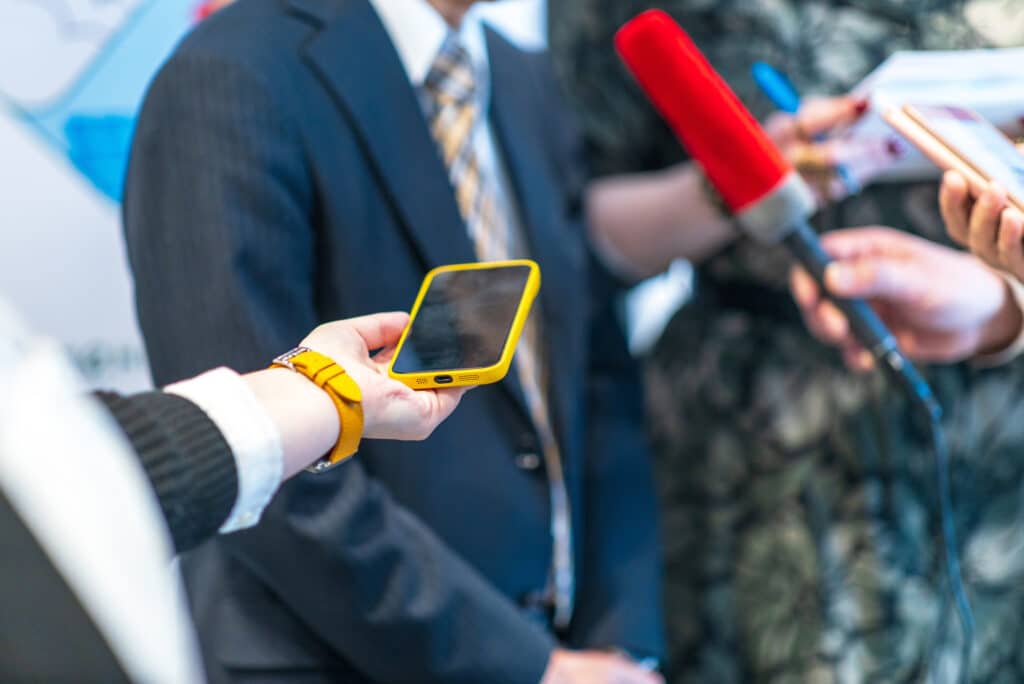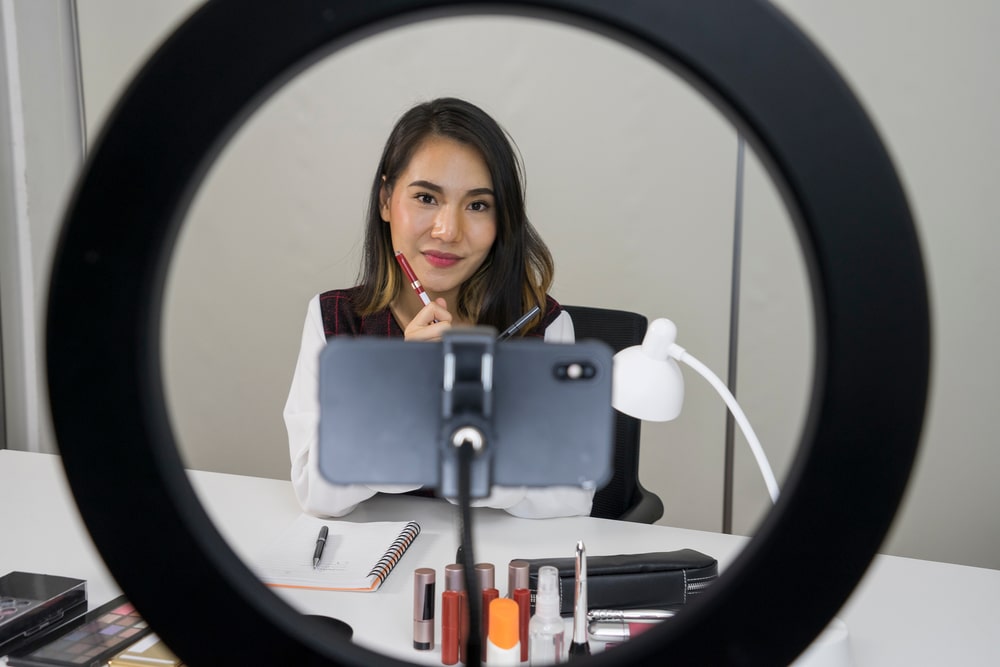Tips and Techniques for Media Interviews for Company Executives
If your company is getting involved in PR, quite often, your company executives will be called upon to be the face of the organisation in front of the press. Whether it’s to announce a new product, respond to a crisis, or discuss industry trends, media interviews are a powerful tool for shaping public perception and building brand credibility.
A well-executed interview can significantly enhance your company’s reputation, demonstrating your commitment and dedication to the audience. However, they also present significant challenges. A poorly handled one can create some damage, underscoring the importance of preparation and skill in media interactions.

At Peppermint Soda, we understand the intricacies of media interactions and are committed to helping executives navigate them successfully. Below are some essential tips and techniques to help company leaders excel in media interviews. If you still need some guidance, check the bottom of the page for information about our Media Training service.
Understand your audience
Before stepping into an interview, it’s essential to know who the interview is for and the audience who will consume it. The audience’s needs and expectations should guide how you frame your message. For instance, an interview with a trade publication will likely require a more technical discussion than one with a general news outlet.
Knowing your audience is the first step to delivering a message that resonates. Consider your audience’s interests, concerns, and knowledge level, tailoring your language and key points accordingly to ensure that your message is both relevant and engaging.
Craft and hone your key messages
Every interview should have a set of key messages that you want the audience to remember. These should be clear, concise, and consistent with your company’s values and objectives. Think of these messages as the pillars of your interview; everything you say should support and reinforce them.
At Peppermint Soda, we emphasise the importance of message discipline. Your key messages are your North Star during an interview. They keep you on track and help ensure that your core points come through clearly. This focus and direction will make you feel more in control and confident during the interview.
Spend time before the interview honing these messages. Practice delivering them, and be prepared to pivot back to them if the conversation starts to stray away from them.
Prepare for tough questions and control the narrative
Media interviews can be unpredictable, and tough questions are inevitable. Whether it’s about a recent controversy, a competitive threat, or an industry-wide issue, it’s crucial to be prepared. Anticipate the difficult questions that might arise and practice your responses.
Preparation is key to staying composed and confident, even under pressure. You’ll need to do more than just rehearse answers—it’s about understanding the broader context and speaking to it credibly.
When faced with a tough question, remember the “bridging” technique. This involves briefly addressing the question and smoothly transitioning back to your key messages. For example, “That’s an important issue, and while we’re addressing it, what’s exciting is our new initiative, which…” Bridging phrases like this can help you steer the conversation back to how you want it to go.
One of the biggest challenges in a media interview is staying in control of the narrative. Interviewers may steer the conversation in directions that don’t align with your objectives. It’s your job to gently steer it back.
We always advise using the “block and bridge” technique to regain conversation control. “Blocking” is a polite way to decline to answer a question directly, while “bridging” shifts the focus back to your key messages. For example, you might say, “That’s not something I can comment on right now, but what I can tell you is…”
Remember, it’s okay to repeat your key messages multiple times during an interview. Repetition helps reinforce these points in the audience’s mind and ensures they are the takeaways from the conversation.
Stay calm and composed
An interview setting is most likely not within your comfort zone, so during an interview, your demeanour is just as important as your words. Those who remain calm and composed under pressure exude confidence and credibility. This calmness allows you to think more clearly and respond more effectively.
During our media training, we always emphasise the importance of mindfulness in interviews. Staying calm is about managing your internal state as much as it is about your outward behaviour, and techniques like deep breathing, positive visualisation, and pausing before responding can help maintain composure.
If an interviewer tries to provoke a reaction, resist the urge to respond emotionally. Instead, maintain a steady tone and stick to your prepared messages. This approach not only protects your reputation but also keeps the interview focused and professional.
Be authentic and human
Audiences are more likely to connect with people who come across as genuine and relatable. Those who have a personality and sound human and knowledgeable get the best responses from an audience. While it’s important to be polished, it’s equally important not to sound overly rehearsed or robotic.
People respond to authenticity—when you speak from the heart and convey genuine passion, your message is more likely to resonate. Share personal anecdotes or experiences that align with your key messages, and don’t be afraid to show some personality.
That said, it’s important to strike the right balance between professionalism and warmth. Too much information can undermine your authority, while too little can make you seem disconnected. Aim for a tone that is both approachable and authoritative.
Use data and examples
Supporting your points with data and real-world examples adds credibility to your message. Statistics, case studies, and success stories can all help to illustrate your points and make your argument more persuasive.
As we often recommend at Peppermint Soda, “Concrete examples make abstract concepts more tangible and easier for audiences to understand.” Use data specific to your company or industry to add weight to your arguments when possible.
However, don’t overwhelm your audience with too many numbers. Select a few key statistics that are directly relevant to your messages and weave them into your narrative.
Master non-verbal communication
Non-verbal cues—such as eye contact, gestures, and posture—play a significant role in how your message is received. Positive body language can enhance verbal communication, making you appear more confident and engaged.
During our media training exercises, we discuss how body language can either support your message or detract from it, so make sure it’s aligned with what you’re saying. Maintain good posture, use hand gestures naturally (don’t go OTT), and make eye contact with the interviewer to convey sincerity and confidence.
Avoid distracting habits like fidgeting or looking away frequently, as these can undermine your message and make you seem unsure. Practising in front of a mirror or recording yourself can help you become more aware of your non-verbal cues and adjust them as needed.
Know when and how to say no
There may be times when you are asked a question that you cannot or should not answer. This could be due to legal constraints, confidentiality issues, or simply because you don’t have the information. Knowing how to decline to answer a question and to say no gracefully is an important skill.
At Peppermint Soda, we advise that it’s better to respectfully decline than to provide inaccurate or speculative information. If you must decline, do so politely and provide a reason. For example, “I can’t comment on that right now due to pending litigation, but what I can say is…”
Practice, practice, practice
The importance of practice cannot be overstated. The more familiar you are with your material and the interview format, the more confident and relaxed you will be. Practice answering a variety of questions, from the expected to the challenging, and rehearse your key messages until they feel natural.
Preparation is the bedrock of success in any media interview, and that’s why we offer a media training service to help you feel natural and at ease during an interview.
Our media training is essential for those who want to communicate their message effectively during interviews. Our brilliant team provides tailored media training that equips leaders with the skills needed to handle tough questions, manage challenging situations, and maintain composure under pressure. Our training focuses on refining key messages, mastering nonverbal communication, and practising real-world scenarios to build confidence.
By following these tips and techniques, you can navigate media interviews with confidence and poise, ensuring that their message is delivered effectively and ethically. Want to find out more about our Media Training? Then contact us at [email protected] for a free session.
Read all about it...
LATEST NEWS

Myths About Working with Journalists and the Realities That Make PR Easier

The Role of PR in the Medical Tourism Industry


